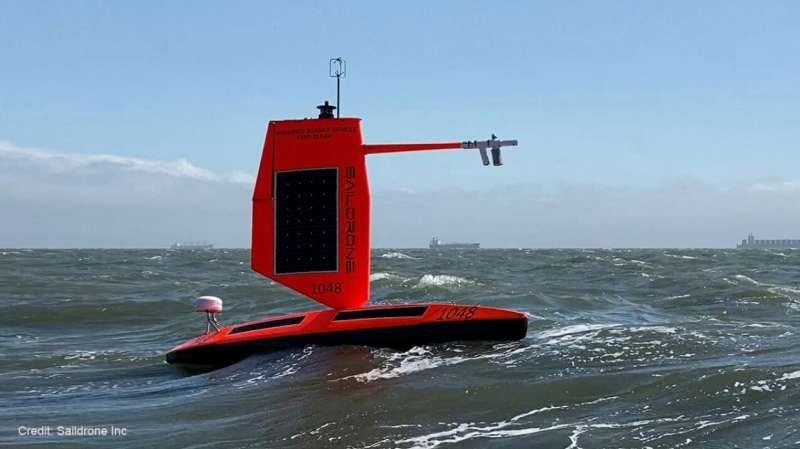In a historic first, a camera-equipped ocean drone that uses MarsKeel’s unique lead ballast system has captured footage from inside a hurricane.
On September 30, US scientists piloted the autonomous vehicle called Saildrone into a Category 4 hurricane in the Atlantic Ocean.
In footage released by the National Oceanic and Atmospheric Administration (NOAA), Saildrone Explorer SD 1045 was seen directed into the midst of Hurricane Sam and battled 50-foot (15 meters) waves and winds of over 120 mph (190 kph) to collect critical scientific data and, in the process, provide an entirely new view of one of Earth’s most destructive forces.
Equipped with a specially designed “hurricane wing” enabling it to operate in extreme wind conditions, SD 1045 braved Hurricane Sam in the open ocean, collecting real-time observations for numerical hurricane prediction models, which are expected to yield new insights into how large and destructive tropical cyclones grow and intensify.
SD 1045 is one of a fleet of five “hurricane” saildrones that have been operating in the Atlantic Ocean during this hurricane season, gathering data around the clock to help understand the physical processes of hurricanes. This knowledge is critical to improving storm forecasting and is expected to reduce loss of human life by allowing better preparedness in coastal communities.
The saildrones provide data directly to NOAA’s Pacific Marine Environmental Laboratory (PMEL) and Atlantic Oceanographic and Meteorological Laboratory (AOML), Saildrone’s partners in this mission.
“Using data collected by saildrones, we expect to improve forecast models that predict rapid intensification of hurricanes,” said NOAA scientist Greg Foltz.
“Rapid intensification, when hurricane winds strengthen in a matter of hours, is a serious threat to coastal communities. New data from saildrones and other uncrewed systems that NOAA is using will help us better predict the forces that drive hurricanes and be able to warn communities earlier,” he added.
Saildrones are armed with an array of custom sensors and transmit measurements like wind speed and direction, barometric pressure, temperature, salinity, humidity, and more in real-time. In the past, saildrone missions have included oceanography, climate studies, fish stock analysis, and environmental monitoring.
MarsKeel has partnered up with Saildrone on all of their autonomous vessels since 2017, with three models now in production.
Marskeel provided assistance from initial design concept to final production of the ballast systems delivered to Alameda, CA.
These complex and specialized ballast systems mirror the complexity of these amazing vessels.
MarsKeel Technology is North America’s largest keel manufacturer, supplying keels to the top production yacht builders and offering repair and modification services for over 40 years.
Contact us today for your keel production, repair, and modification needs.

